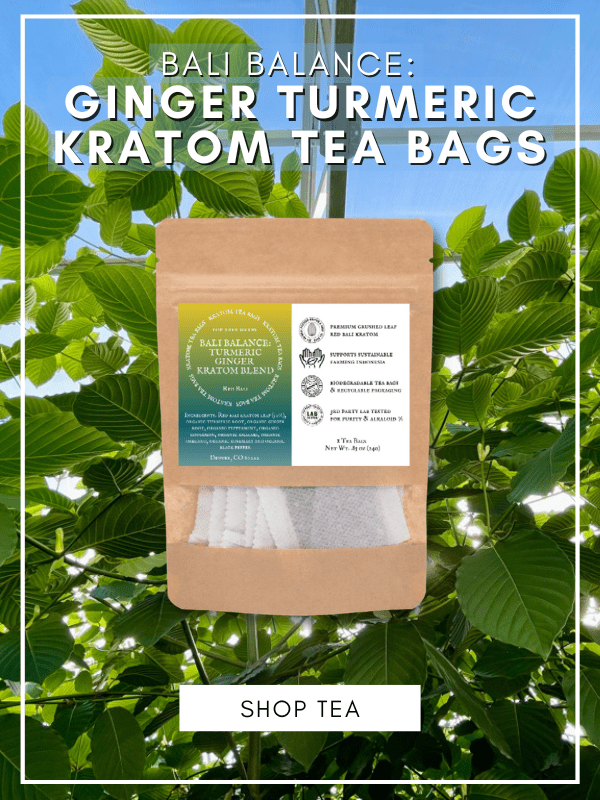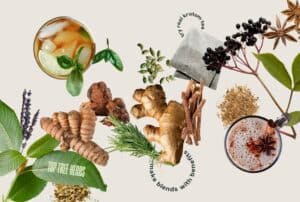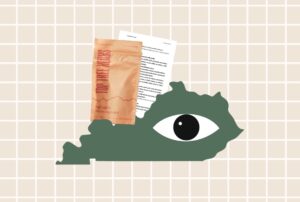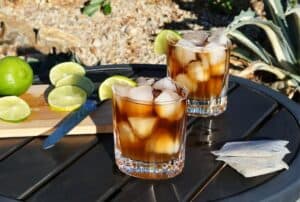Everyone sleeps. There’s no getting around it. Sleep is very important to who we are. There’s good reason to be curious if there’s anything you can do to get more from your nightly zzz’s. In this post, we’ll be discussing our best tea for sleep, and why we think you should give it a shot!
Kratom for Sleep?
Now, we know what you might be thinking. “Kratom for sleep? Is this the same plant that I’m supposed to use as a caffeine alternative?” First off, that is correct. And secondly, your confusion is not unfounded.
Kratom has a fairly confusing, and somewhat contradictory, range of effects. It is different for everyone. That being said, there are some general trends which can help you forge the best relationship with this leaf.
For starters, kratom has traditionally been consumed for its energizing effects. Manual laborers working in their fields throughout Southeast Asia have picked and chewed kratom leaves for a boost for millenia. That same demographic, too, has been consuming kratom leaves at the end of the day to unwind, socialize, and prepare to sleep for a similarly long period of history.
The difference between these two effects, generally, is the serving size. You see, kratom leaves have a unique composition of many different natural compounds. These compounds all react to the body in different ways. At different ratios of the compounds, different effects are felt.
Weak and Strong Kratom Tea
At smaller serving sizes, kratom tea (one or two tea bags) or chewed kratom leaf (one to five leaves) is energizing.
It’s a perfect caffeine replacement, or addition to smaller caffeine servings. Although kratom tea is one of our favorite natural “pick-me-ups,” it doesn’t mean that it’s limited to only that function.
Up your serving size to three or more tea bags, or brew several handfuls of fresh leaves, and you’ll experience the second tier of effects. In Thailand, strong tea made from fresh kratom leaves is very popular among young adults.
It is may be drunk it in place of alcohol in social settings. Or, it may be used as a tea for sleep. Despite recent negative attention in the press, strong kratom teas have as rich a history as do the weak teas, with a similar safe history of use.
If you’re looking for a bedtime tea, or a strong kratom tea, our Red Relaxation herbal tea blend is worth trying. It is blended with several different ayurvedic and non-ayurvedic herbs, making it the ideal adaptogen tea for sleep.
Ayurvedic Tea for Sleep
The art of Ayurveda developed in the Indian subcontinent, many thousands of years ago. The herbs are chosen based on their relationship to our doshas.
A dosha is each of the three energies that are believed to circulate our body and minds. The elemental doshas are vāta, pitta and kapha. When the doshas are out of balance we are unwell, and when they are balanced we are healthy.
Each dosha is correlated to different herbs and activities which are supposed to correct the imbalances originating from them. According to traditional ayurvedic beliefs, there are three types of sleep deficiencies. The vāta dosha relates to one’s mind and mental state.
When there is a vāta dosha imbalance, our restless mind keeps us from slumbering. An ayurvedic practitioner will recommend lavender for vāta imbalances. Again, these are ayurvedic beliefs, and not medical recommendations or founded on evidence-based research. However, we’ll get into what science does have to say about these herbs later on.
The pitta dosha is said to be emotional in nature. Imbalances are identified by hot flashes and other sleep interruptions. With a logic eerily similar to the archaic humoral theory of medicine utilized by the Greeks and Romans, a “cooling” herb is recommended. In this blend, that purpose is served by Gotu Kola.
Finally, the third dosha is Kapha. Imbalances in the Kapha dosha typically affect one’s ability to recover from sleep. This means that you may wake up feeling tired, despite getting an otherwise full night’s rest. The ayurvedic practitioner will, in this instance, recommend chamomile. All together, these herbs would make up an ayurvedic tea for sleep.
Our Thoughts on Ayurvedic Herbs and Beliefs
First off, we want to be clear that absolutely nothing said in regards to the ayurvedic traditions should be interpreted as medical advice.
We respect traditions to no end, but think they should be appreciated in their context. They are historical stepping stones in our continual progression towards better understanding.
The way herbs are used in ayurvedic traditions should be a beacon for researchers to study the traditionally claimed effects. Many studies have done just that, and confirmed traditional ayurvedic practices. Yet humans are notoriously good at fooling themselves.
We’ve been doing it for centuries. We believe in theories for generations before suddenly throwing them out for a theory that describes phenomena a little better. It’s a cycle we’re bound to repeat eternally. And that’s not even getting into the placebo effect.
But does that mean we need to throw out every traditional belief system and its accompanying wisdom? Absolutely not! Despite having moved on to a belief system that better serves our purposes, old belief systems, like ayurveda, stuck for as long as they did because they had some validity.
Adaptogen Drinks
Many of the traditional ayurvedic herbs are considered to be adaptogens, or “immunostimulants.” An adaptogen is an herb, compound, mixture, fungi, etc. that is supposed to help your body reach and maintain a state of homeostasis.
By way of analogy, it flattens the curves of the body’s response to stress and other stimuli. Instead of having a massive sympathetic response (i.e. fight or flight) followed by a crash, adaptogens help you maintain a level of composure.
An adaptogen drink is a beverage made from adaptogens. Shocking, huh?
Jokes aside, making an adaptogen drink, such as a tea, is one of the most pleasurable and simple ways of consuming adaptogenic herbs or fungi. Furthermore, a benefit of reaching for an adaptogen drink instead of a capsule is that the tea will usually contain choice herbs.
Since capsules contain ground up powder, the manufacturers know they can get away with using herbs that would either taste too bad to drink or have obvious defects.
That isn’t true across the board, but with an adaptogen drink made with whole herbs, you’ll at least have the benefit of being able to examine what you’re drinking.
Adaptogen Drinks and the Future
Adaptogens are not a new idea. With a focus on balance, there are a lot of parallels between the theory of adaptogens and ayurvedic practices. The difference is that herbs that grow outside the Indian subcontinent are classified as adaptogens.
Whereas ayurveda doesn’t have a similar scope. Yet even while adaptogens are getting newfound hype by marketers today, they are rapidly being replaced with immunostimulants.
A category that also focuses on homeostasis and utilizing the body’s own defenses, but with greater attention to individual compounds and their direct mechanism of action. An adaptogen beverage can be anything from a tea for sleep to a custom blend of synthetic nootropics.
Herbs for Soothing a Restless Mind
Beyond the dosha theory of health, which has its place, we like to engage with the peer reviewed literature when assembling our blends. While many scientists and secular folk like to poke fun at traditional schools of thought like ayurveda, most of these papers are standing on the shoulders of the ayurvedic practitioners that came before them.
Without the brave soul who first ingested the herb to confirm that it wasn’t poisonous, to those who started associating it with specific effects, modern scientists would be left in the dark. There would be no hypothesis regarding how an herb causes an effect, without there first being the tradition to point the scientists toward the effect in the first place.
Many of the papers and research into these herbs are still in their infancy. Many are in vitro, on petri dishes of cell cultures, which have many flaws and only a fool would extrapolate the effect to humans.
Others still are in vivo, and tested on various lab animals such as mice, beagles, and cats. Despite the great deal of suffering that these animals undergo, and their great sacrifice, the effects that are elucidated in them still only scratch the surface.
At best we have papers that use small groups of volunteers in double-blinded, placebo controlled studies. But in our current medical paradigm, even that is not enough to satisfy our health regulators, who demand several tiers of clinical trials with hundreds of participants before recognizing medical value.
And so to preface what is to follow: These statements have not been evaluated by the Food and Drug Administration. This product is not intended to diagnose, treat, cure, or prevent any disease.
Lavender
Lavender is one of many species in the mint family. Its color is so iconic that we named the pigmentation after the flower. Lavender is endemic to the Old World, stretching from England to India and everywhere in between.
There are several different species of lavender that are cultivated for their aromatic essential oils. The most abundant of these types is common lavender, or English Lavender (Lavandula officinalis).
Numerous studies have been conducted on lavender extract and essential oil on rats. In line with the traditional uses of lavender, proxy tests for stress in rats showed improvements.
“The main constituents of lavender oil are linalool, linalyl acetate, 1,8-cineole, β-ocimene (usually both cis- and trans-), terpinen-4-ol and camphor.” (Cavanagh 2002) While the components of the oil are well characterized, the traditional effects are not backed up in the scientific literature.
Yet despite lacking evidence, Lavender continues to enjoy immense popularity among aromatherapists and herbalists alike. In a tea, lavender conveys its popular fragrance, and compliments both savory or sweet flavors. By and by, drinking lavender tea for sleep is a great addition to your bedtime ritual.
Chamomile
Chamomile might just be the most popular herbal tea ingredient besides Camellia sinensis, the ‘true’ tea. Like lavender, chamomile has been prized by ancient peoples since we started recording history.
It has roots stemming from ancient Egypt, Rome, and Greece. It grew all over the Old World, like lavender, from England to the Indian subcontinent and Japan.
An incredibly fragrant flower, the scent is indicative of the concentration of powerful essential oils. This oil is composed of monoterpenes (such as limonene, sabinene, pinene), butyric acid, isobutyric acid, isobutanol, 3-methylbutan-1-ol, 2-methylbutan-1-ol butyrates, azulenes and many other compounds.
When brewed into a tea, chamomile has a soothing floral flavor. Typically enjoyed before bedtime, these effects have been investigated in a few inconclusive human clinical trials.
By and large, chamomile’s popularity has withstood the test of time. In our Chai Unwind tea blend, chamomile compliments these other soothing, bedtime herbs by imparting its classic flavor and effect.
As a final note about chamomile, avoid it if you are allergic to related flowers such as ragweed, chrysanthemums, marigolds, or daisies.
Gotu Kola
Gotu kola is an aquatic plant that is native to the wetlands of India through much of the Western Pacific Islands, with occurrences in Southeast US and parts of Eastern Europe. In Indian cuisine it is considered very nutritious and used for a variety of salad-like dishes. The reported medical benefits are thought to come from the triterpenoid compounds present in the leaves.
Traditionally it has been used as a memory enhancer, although scientific evidence for this claim is lacking. Its use as a bedtime tonic is related to the belief that it can help calm a restless mind. The best evidence to support this claim involved giving humans 12 grams of gotu kola prior to monitoring their response to startling sounds. This test is thought to be a good proxy for anxiety, but at its current state there is still a great deal of research that needs to be done before drawing conclusions.
Yet its nutritional qualities are not to be denied. While many people are looking for a silver bullet to solve their issues related to falling asleep, a holistic approach to health is always a great place to start. Improving your nutrition and making a conscious decision to step away from stressors a few hours before bed may be the key you’ve been looking for.
Cardamom and Cinnamon Tea
The final touches to our Red Relaxation blend are the cardamom and cinnamon tea ingredients.
These two flavors harmonize beautifully, and we would include them even if they contributed nothing to the relaxation effect. Fortunately, they are both adept adaptogens in their own right, and fit right into our tea for sleep.
Cardamom and cinnamon tea is a delicious beverage that is reminiscent of a savory, sweet apple pie. Cardamom has been used by Indian Ayurvedic practitioners for centuries, but little is known about how it actually affects our body.
It is the third most expensive spice behind saffron and vanilla. Thankfully for its price, it packs a huge punch for relatively little material.
Cinnamon is another classic spice that we honestly could include in every herbal tea blend. We love it that much. In cardamom and cinnamon tea, cinnamon is the first flavor that you taste, before it winds down to a pleasant cardamom aftertaste.
At this time, like many of the herbs on this list, these effects haven’t been validated in clinical trials, so we caution anyone against expecting similar therapeutic results.
Red Relaxation: Chamomile Kola Kratom Tea for Sleep
All said and done, our blueprint for this tea was inspired by our desire for a soothing, bedtime beverage. A tea for sleep, if you will. In doing so, we were careful to balance a delightful flavor with an array of herbs that have traditional roots in complimenting a healthy sleep routine.
To get the most out of the tea, we recommend steeping your tea bags in a thermos of near boiling water for 20 minutes before drinking. A spritz of lemon can help extract some of the desirable alkaloids from the herbs, but it is optional as some of our beta testers expressed preferring the taste without the citrus.
We hope that you were able to learn something about these herbs and their traditional context. We are huge proponents of respecting tradition and giving it the benefit of the doubt when searching for health benefits. That being said, we will never make promises regarding what to expect from an herb based solely on tradition. For us, an herb first needs to clear the high bar of human clinical studies. Until then, we can only say, “taste and see what they do for you!”
Until next time, cheers to better brewing!
![[Not Used Yet] herbal ingredients blog graphic 1 [Not Used Yet] herbal ingredients blog graphic 1](https://toptreeherbs.com/wp-content/uploads/elementor/thumbs/Not-Used-Yet-herbal-ingredients-blog-graphic-1-pt4a8x5wr19ntj5q8q7xv9m76ickff3jx24naidnxa.png)






